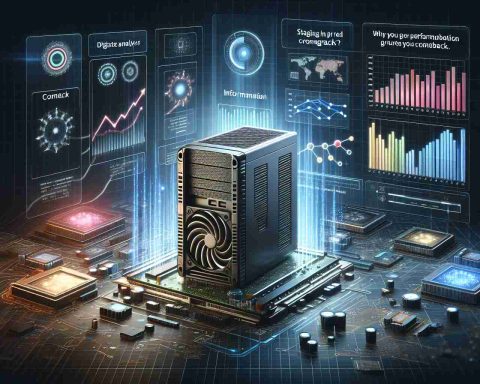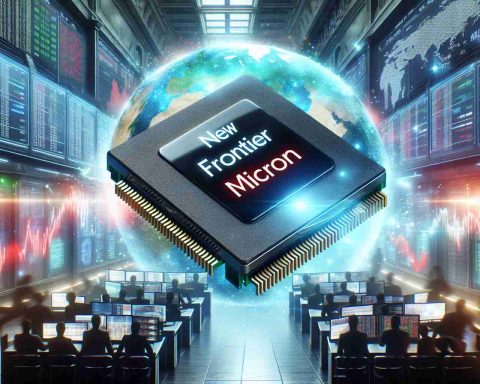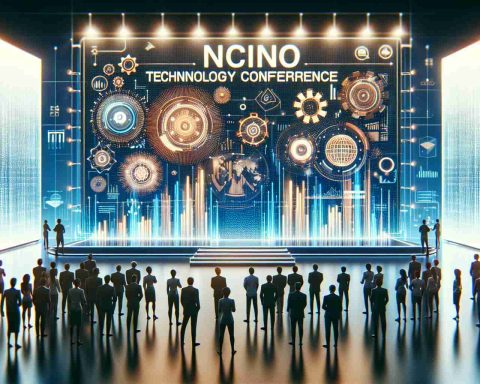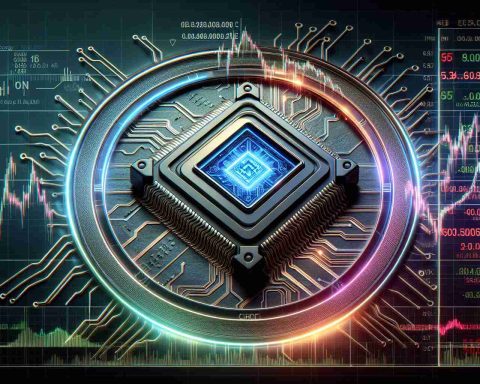Nvidia’s Path to Dominance Faces New Challenges
Nvidia, famously known as a driving force in the artificial intelligence realm, has continued to reach impressive financial pinnacles, earning itself a spot on the prestigious IBD Leaderboard as one of the most promising growth stocks. Recently, Nvidia matched Apple’s dominance in Nasdaq’s market capitalization, each holding a substantial influence of 9.5% over the index. However, the journey has not been without hurdles, as increased stock volatility has prompted investors to reconsider their strategies.
Nvidia’s Record Performances
After achieving yet another high shortly after announcing earnings, Nvidia’s stock experienced a downturn, slipping beneath its 21-day exponential moving average. The stock’s momentum remains close to its annual peak, reflecting a pattern of impressive growth. An extraordinary 236% average earnings surge over the past three quarters speaks volumes of Nvidia’s financial achievements, with expectations of 127% earnings growth for the ongoing fiscal year.
Despite these formidable accomplishments, Nvidia has had to navigate risks associated with its post-October 2022 gains. The company’s current position is within a fourth-stage base, marked by often unpredictable weekly price oscillations that sometimes breach its 10-week moving average.
Investor Considerations
While Nvidia stands out as a top AI stock, potential and current investors need to account for volatility concerns, especially those entering post the 140.76 buy point breakout. For those who invested during earlier phases and have sizeable gains, adhering to entry and exit strategies is crucial to safeguard profits.
In conclusion, as Nvidia continues its volatile ascent, investors must evaluate their financial goals and strategies in light of turbulent market conditions.
Is Nvidia’s AI Reign Sustainable Amidst Global Challenges?
Nvidia’s revolutionary journey in artificial intelligence (AI) has not only transformed the tech world but has also significantly impacted global economies, communities, and industries. However, the path to the top is fraught with new challenges that go beyond stock market dynamics, influencing how countries strategize around technology and innovation.
The Global AI Arms Race
Nvidia’s technology is at the heart of the AI revolution, which is driving an unprecedented global competition. Countries like China and the United States are heavily investing in AI to secure technological supremacy, spurring an ‘AI arms race’. Nvidia’s GPUs are critical for developing AI infrastructure, giving it a pivotal role in this race. While this boosts technological advancement, it also raises geopolitical tensions, which could lead to trade restrictions and sanctions affecting global supply chains.
Impact on Local Economies
As Nvidia pushes technological boundaries, local economies witness both opportunities and challenges. On one hand, advancements in AI lead to job creation in tech hubs around the world, fostering innovation. On the flip side, automation powered by NVIDIA’s AI tools can displace jobs, particularly in industries reliant on manual processes. Communities must adapt by focusing on reskilling programs to ensure the workforce remains relevant.
Ethical Dilemmas in AI
Nvidia’s potent AI capabilities bring to light ethical concerns surrounding data privacy and surveillance. How much data is too much? Where should the line be drawn when AI systems, powered by sophisticated Nvidia chips, analyze and predict human behavior? Countries and communities are grappling with these questions, as the balance between innovation and privacy becomes increasingly delicate.
Advantages and Disadvantages
The advantages of Nvidia’s technology are vast—from accelerated computing power that enables breakthroughs in healthcare, such as drug discovery and personalized medicine, to real-time data analysis that enhances business efficiencies. However, the disadvantages cannot be ignored. The environmental impact of running energy-intensive data centers powered by Nvidia GPUs poses significant challenges. Moreover, the high cost of these technologies can widen the gap between developed and developing economies.
What Does the Future Hold?
As Nvidia pushes forward, investors and governments must ponder critical questions: How can we ensure equitable access to AI technology? What regulations are needed to maintain ethical standards in AI development? And crucially, how can we mitigate the risks while maximizing the benefits of Nvidia’s technological milestones?
Answering these questions requires a multi-faceted approach that involves cooperation between tech companies, governments, and educational institutions. Bridging the digital divide, investing in sustainable tech practices, and fostering inclusive tech development are integral to shaping a future where AI serves humanity as a whole.
For more insights into the tech industry’s role in global economic development, visit IDC or explore the latest in AI and business innovation at IBM.























